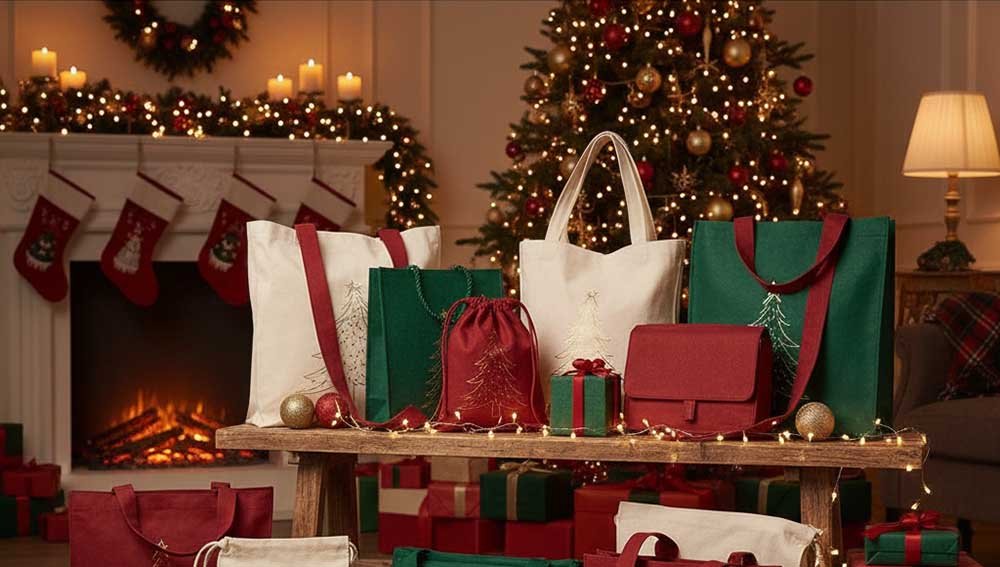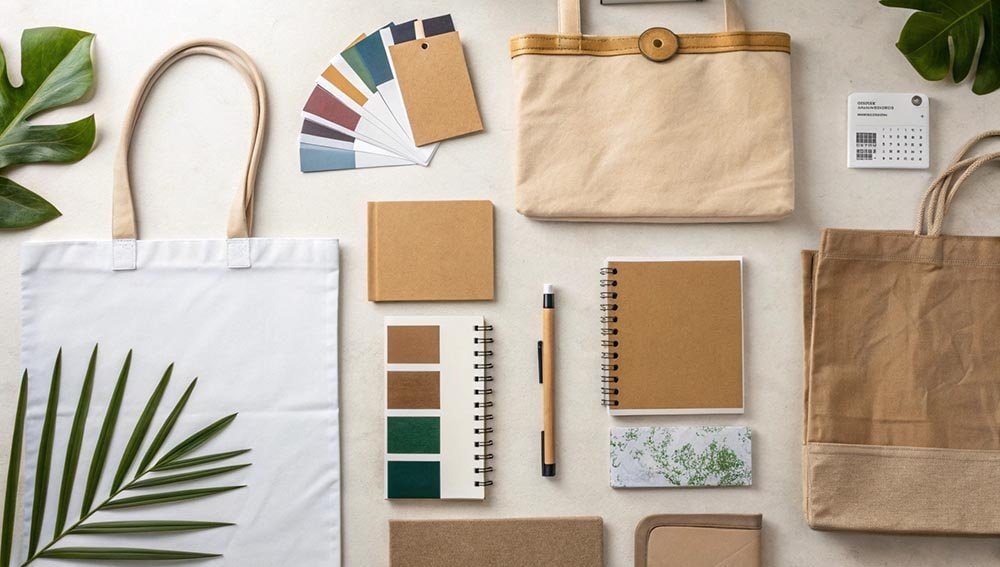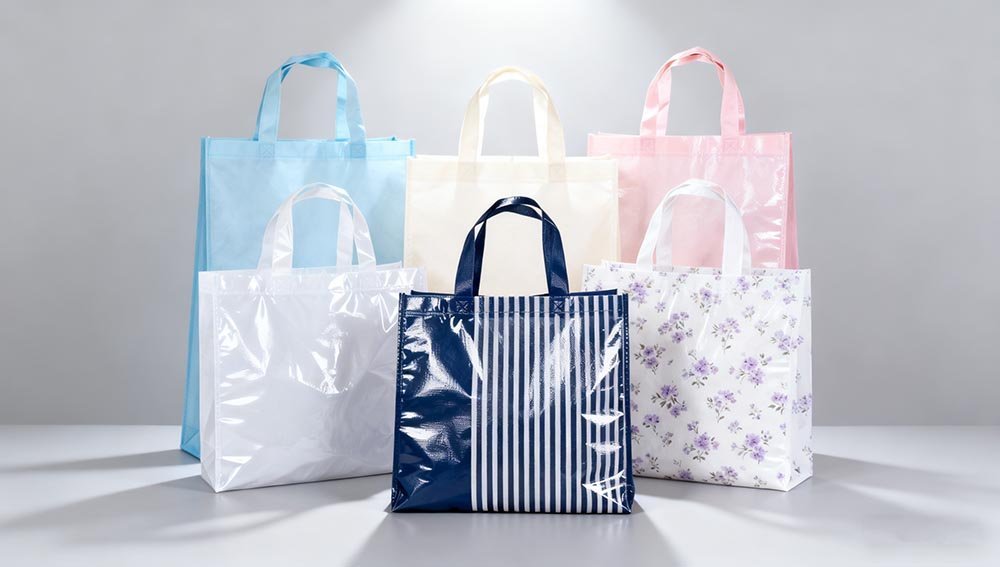Your brand needs packaging that looks great and protects your product. But standard bags can tear, get wet, or make your brand look cheap. Laminated bags offer a strong solution.
Laminated bags offer excellent durability, waterproofing, and high-quality printing, which makes your brand look more premium. However, their main downsides are higher costs and recycling challenges, which are important factors for any eco-conscious business to consider before choosing them.
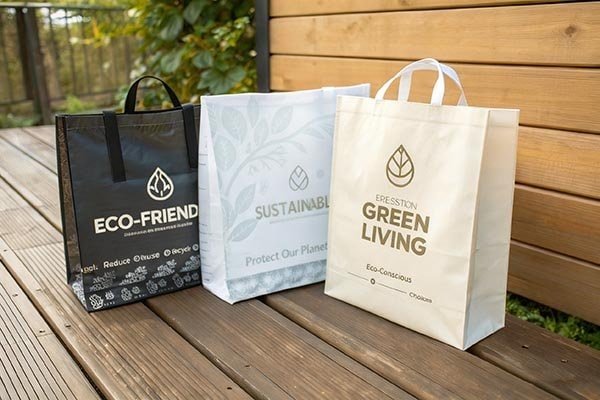
Laminated bags sound like a powerful tool for your brand, but they are not a one-size-fits-all solution. To make the best choice, you first need to understand the basics. Let’s break down exactly what they are and how they can work for you.
What Are Laminated Bags for Brand Packaging?
Are you confused by all the different packaging terms? It is hard to choose the right bag when you do not know the differences. Laminated bags are a specific type with unique benefits.
A laminated bag is a bag with a thin plastic film attached to its surface. This film covers a base material like non-woven fabric, paper, or jute. The layer protects the bag, makes it stronger, and improves its look with different finishes.
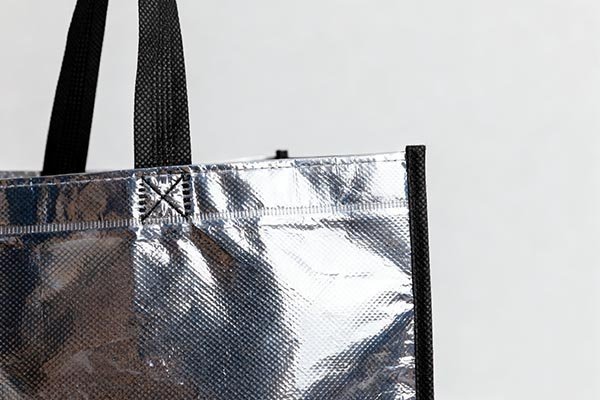
The process of creating a laminated bag is simple. We take a base material and bond a thin layer of plastic film, usually Polypropylene (PP) or Polyethylene terephthalate (PET), to its surface. This film serves three main purposes: it protects the bag from moisture and dirt, it adds strength and tear resistance, and it creates a perfect surface for high-quality printing. This process completely changes the look and feel of the bag.
Lamination Finishes
The finish of the film determines the final appearance of the bag. You can choose a finish that best matches your brand’s style. The two most common types are glossy and matte.
| Finish Type | Description | Meilleur pour |
|---|---|---|
| Glossy Lamination | Has a shiny, reflective surface that makes colors pop. | Brands that want a vibrant, eye-catching look. |
| Matte Lamination | Has a soft, non-reflective surface for a subtle feel. | Brands aiming for a sophisticated, premium look. |
What Are the Main Advantages of Laminated Bags for Your Brand?
Do you worry your packaging will not last or look professional? Flimsy bags can damage your products and your brand’s image. Laminated bags solve these problems with their strong build.
The main advantages are durability and protection. They are waterproof, tear-resistant, and easy to clean. Lamination also allows for high-quality, vibrant printing, giving your packaging a premium look that boosts your brand image and encourages reuse.
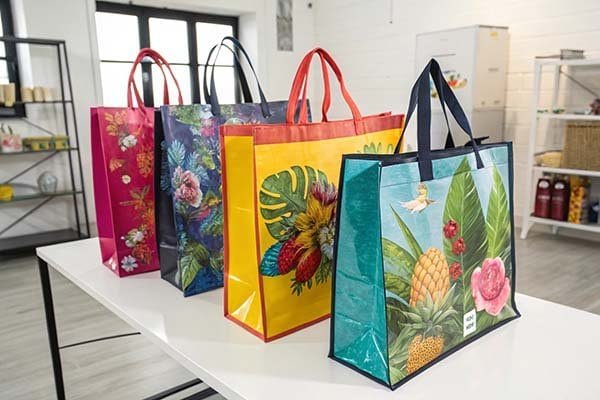
Laminated bags offer several key benefits that can directly help your business. They provide a practical way to protect your goods while also serving as a powerful marketing tool. Their strength and appearance make customers more likely to reuse them, which means more exposure for your brand. This extended use turns a simple package into a walking advertisement.
Key Benefits for Your Brand
- Waterproof and Stain-Resistant: The plastic film creates a barrier that protects the contents from water, spills, and dirt. This is perfect for products that need to stay dry or for use in all weather conditions.
- Increased Durability: Lamination adds a layer of strength, making the bag more resistant to tearing and stretching. It can handle heavier loads than non-laminated bags, ensuring your products are safe.
- Superior Printing Quality: The smooth surface of the film is ideal for printing complex, full-color designs. Your logo and images will look sharp, bright, and professional, helping your brand stand out.
- Enhanced Brand Perception: A well-made laminated bag has a premium feel. It suggests quality and tells customers you care about presentation, which can elevate your brand’s image.
- Reusable and Easy to Clean: Because they are durable and can be wiped clean, customers often reuse laminated bags. This practicality adds value for the customer.
What Are the Drawbacks of Laminated Bags?
Are you thinking about using laminated bags? Before you decide, you need to know the downsides. Ignoring them could lead to unexpected costs or hurt your brand’s eco-friendly message.
The biggest drawbacks are cost and environmental impact. They are more expensive than non-laminated bags and harder to recycle because they mix materials. They also are not breathable, and the lamination can sometimes peel off with heavy use.
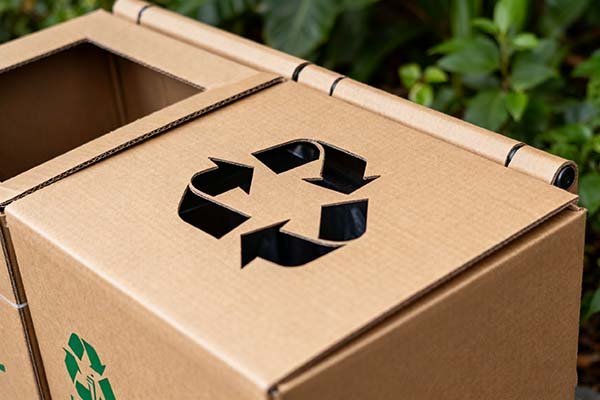
While laminated bags have many strengths, they also have weaknesses you must consider. Acknowledging these drawbacks helps you make a more informed decision that aligns with your brand’s budget, values, and practical needs. It is important to weigh the good against the bad to see if they are truly the right choice for your specific product and customer base.
Potential Downsides to Consider
- Recycling Challenges: The main environmental concern is that laminated bags are made from multiple materials (e.g., fabric and plastic). This combination makes them difficult to separate and recycle in most standard recycling systems.
- Higher Cost: The lamination process requires extra materials and machinery. As a result, laminated bags cost more to produce than their non-laminated counterparts, which can impact your packaging budget.
- Lack of Breathability: The plastic film is a non-porous barrier. This means the bag is not breathable, making it unsuitable for packaging fresh produce or other items that need air circulation to stay fresh.
- Risk of Delamination: With long-term or rough use, the plastic film can sometimes begin to peel away from the base material, especially at the edges or seams. This can affect the bag’s appearance and durability over time.
How Should You Choose Laminated Bags for Your Brand?
Are you ready to choose your packaging? Making the wrong choice can waste money and may not fit your needs. Let’s help you decide if laminated bags are the right fit.
Choose laminated bags when you need a high-end visual effect, waterproof protection, and durability. Your choice of material and finish should match the specific occasion, like retail or events, to make the biggest impact for your brand.
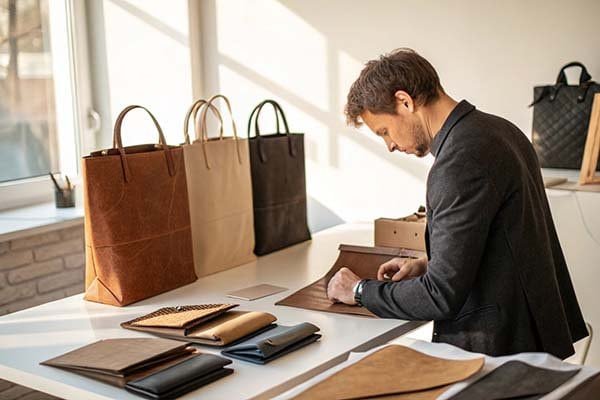
The right choice depends entirely on where and how your customers will use the bag. Your packaging should fit the situation. By matching the bag to the use case, you create a better experience for your customers and get more value for your brand. Let’s explore some common scenarios to find the perfect fit.
For Daily Retail and Shopping
In a busy retail store, your bag needs to be a workhorse. Choose laminated PP woven fabric for heavy items like groceries, as it is extremely strong and tear-resistant. For clothing or lighter goods, laminated non-woven is a great, cost-effective alternative. A glossy finish makes your logo and colors bright and eye-catching. It is also easy to wipe clean, which encourages customers to reuse it. Strong handles and a wide base make the bag more practical.
For Trade Shows and Events
At a trade show, your bag is your business card. You need to stand out from the crowd. Laminated non-woven bags are lightweight and perfect for this. Their smooth surface is ideal for printing vibrant, full-color photos and complex designs. A glossy finish will make your graphics pop under the event lighting. Make sure the handles are long enough to be worn over the shoulder, so attendees can easily carry your materials while keeping their hands free.
For Premium Gifts and Boutiques
When the product is high-end, the packaging must be too. Laminated paper bags are the best choice for a luxury feel. Select a thick paper stock with a matte lamination. This creates a soft, elegant look that feels expensive. To add a special touch, consider spot UV on your logo to make it shine against the matte background. Finish it with soft rope or ribbon handles to complete the premium experience.
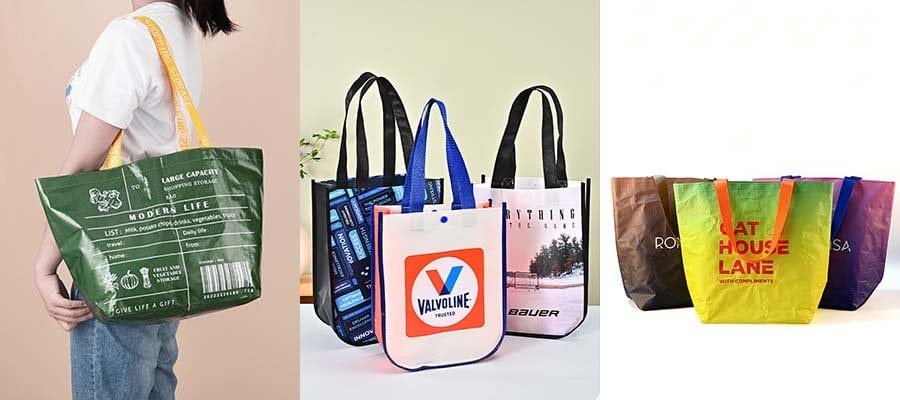
| Use Case | Recommended Material | Best Finish | Key Feature |
|---|---|---|---|
| Retail & Shopping | Laminated PP Woven | Glossy | Durability, easy to clean |
| Salons professionnels | Laminated Non-Woven | Glossy | Vibrant, full-color printing |
| Premium Gifts | Laminated Paper | Matte (with Spot UV) | Luxury feel, ribbon handles |
What Eco Considerations Should You Keep in Mind with Laminated Bags?
Do you love the look of laminated bags but worry about the planet? Traditional options can be bad for the environment. But there are ways to choose more sustainable versions.
To make laminated bags more eco-friendly, consider using recycled materials like RPET for the film. You can also pair the film with a recyclable base like paper or jute. Another option is partial lamination, which protects key areas while using less plastic.
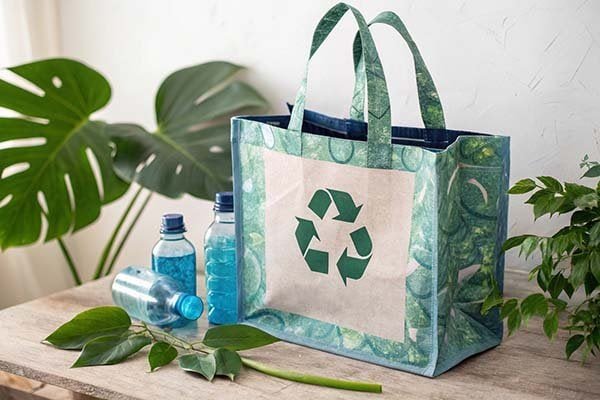
The environmental impact of laminated bags is a valid concern, but innovation is providing better solutions. As a business owner, you have the power to choose options that reduce your environmental footprint without sacrificing quality. By asking for these alternatives, you can balance your brand’s aesthetic goals with a commitment to sustainability.
Smarter, Greener Lamination Choices
Here are some practical ways to make your laminated bags more environmentally friendly:
- Use Eco-Friendly Films: Ask your supplier about films made from recycled materials, like RPET (recycled PET plastic), which gives a second life to plastic bottles. Water-based lamination adhesives are another option that reduces the use of harsh chemicals.
- Choose Sustainable Base Materials: Combine the lamination with a base material that is more sustainable. For example, using a film on kraft paper or jute can lower the overall environmental impact, as these materials are renewable and biodegradable.
- Consider Partial Lamination: You do not always have to laminate the entire bag. Spot lamination allows you to add a glossy or matte finish to just your logo or a specific design element. This technique provides the premium look you want while significantly reducing the amount of plastic used on each bag.
Conclusion
Laminated bags offer great durability and a premium look, but you must consider the cost and eco-impact. By choosing the right materials, they can be a powerful branding tool.
Frequenty Asked Questions
Q: Besides the print design, what other parts of a laminated bag can I customize?
A : You can customize many elements! This includes the handle material (like nylon webbing or the base material itself), handle length, the color of the piping or trim, and adding features like snap closures, zippers, or inside pockets.
Q: What is the difference between a matte and a gloss lamination finish?
A : A gloss finish is shiny, reflects light, and makes colors appear more vibrant and eye-catching. A matte finish is non-reflective, providing a more subdued, sophisticated, and premium feel. The choice depends entirely on your brand’s aesthetic.
Q: How should customers clean and care for their laminated bags?
A : The best way to care for a laminated bag is to simply wipe it clean with a damp cloth. They should not be machine washed or put in a dryer, as high heat can damage the lamination film.
Q: What specific factors influence the final price of a laminated bag?
A : The final price per bag is influenced by several factors: the size of the bag, the quantity ordered, the number of colors in your design, the type of handle, and any additional features like zippers or interior lining.
Q: What kind of artwork file is best for printing on these bags?
A : For the sharpest results, you should provide your artwork in a vector format, such as an Adobe Illustrator (.ai), .eps, or a high-quality .pdf file. This ensures the design can be scaled without losing quality.
Q: How much weight can a standard laminated shopping bag hold?
A : A well-constructed laminated bag is very strong. A standard retail-sized bag can typically hold between 20 to 30 pounds (about 10-15 kg) without issue, especially if it has reinforced handle stitching.
Q: Can natural fabrics like cotton or canvas be laminated?
A : While technically possible, it’s not common. Laminating a natural fabric like cotton negates its breathability and changes its texture, often making it feel stiff. The process works best with non-woven or woven polypropylene.
Q: Can I get a physical sample of my design before a full production run?
A : Yes, most reputable suppliers offer a pre-production sample. There is usually a fee and it adds to the timeline, but it is the best way to approve the exact colors, materials, and construction before committing to a large order.
Q: Are the inks used in the printing process safe and eco-friendly?
A : Reputable manufacturers use non-toxic, water-based or soy-based inks for printing on laminated bags. It’s always a good idea to confirm this with your supplier if environmental safety is a top priority for your brand.
Q: If a laminated bag can’t be recycled easily, what is its main environmental benefit?
A : Its primary environmental benefit comes from its reusability. Because it is so durable and long-lasting, a single laminated bag can replace hundreds of single-use plastic bags over its lifetime, reducing overall waste.


